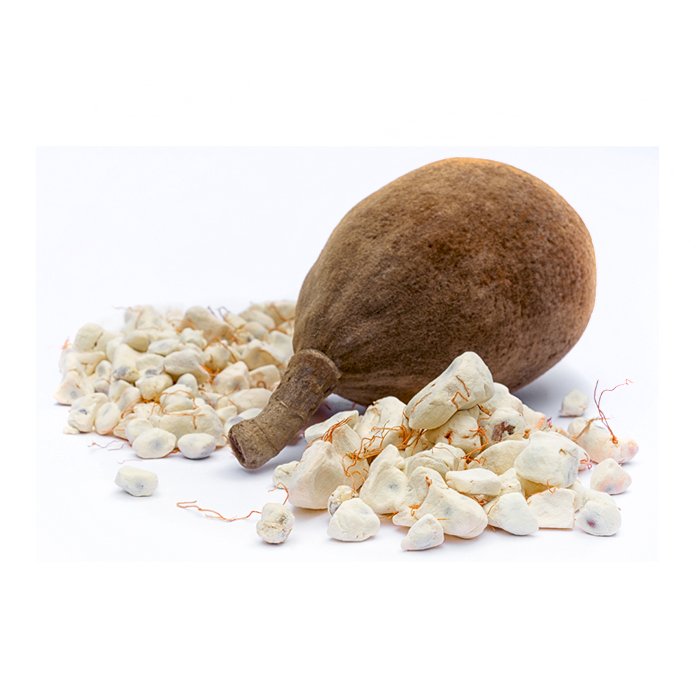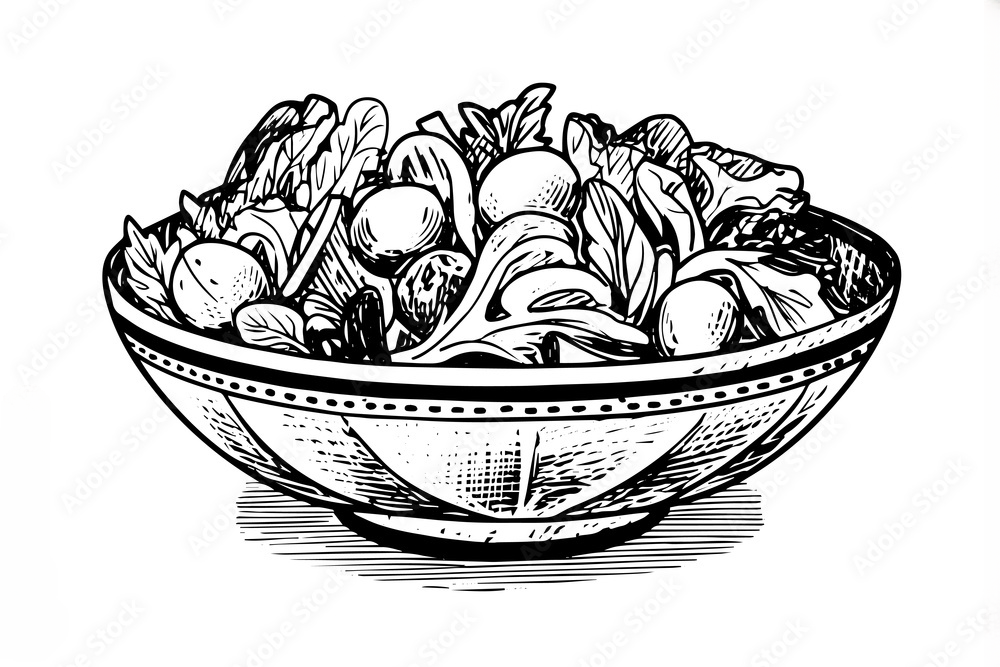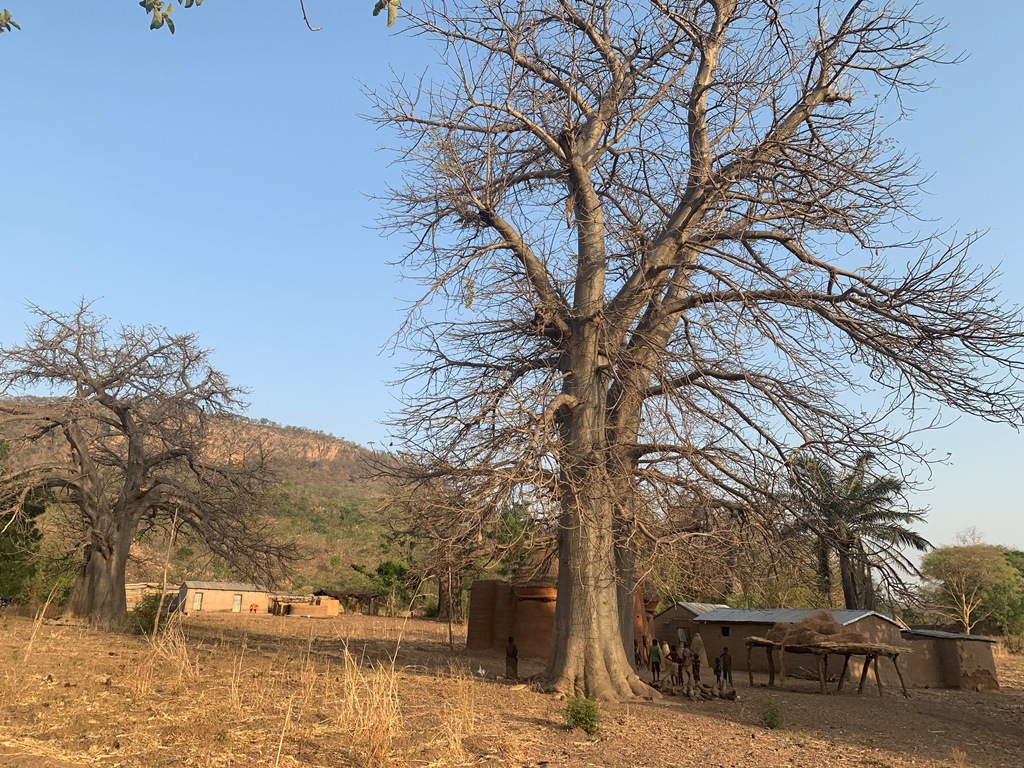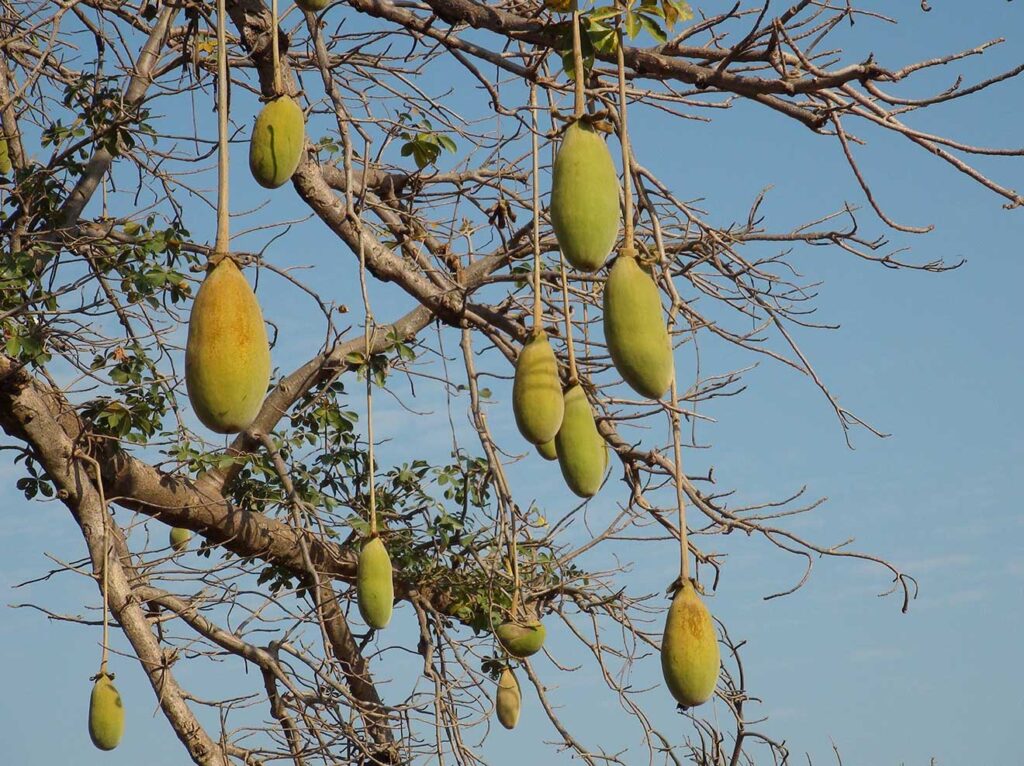
The baobab (Adansonia digitata), a member of the Bombacaceae family, is a tree native to tropical Africa, basically Togo. It can reach a remarkable height (up to twenty metres!), as well as a huge girth (around 30 metres). This highly symbolic tree can be recognised by its characteristic silhouette: a broad trunk topped by slender branches that look like roots. This tree is particularly important because all its parts can be used in nutrition, cosmetics and herbal medicine.
The seeds, for example, can be transformed into vegetable oil, while the baobab’s leaves are edible. Known as ‘monkey bread’, the large, oval fruits ripen at the end of long, hanging stalks. In fact, they are the only fruit in the world to dry naturally on their branches during the ripening period. Once the fruit has been picked, the ‘calabash’ has to be opened. The pulp, which takes the form of a kind of agglomerated dry powder, can then be recovered, separated from the seeds and crushed to obtain Baobab fruit pulp powder.
Baobab fruit pulp is appreciated for its fruity, tangy taste. It is traditionally used in Africa to make refreshing drinks. Thanks to its high content of vitamin C, calcium, fiber and essential minerals, it is ideal for preventing deficiencies. Because of its rich nutritional content, it is best eaten raw, without cooking, to maximize its benefits.

Properties
Why consume baobab fruit pulp?
Exceptionally rich in vitamin C, Baobab fruit pulp contains at least 6 times more vitamin C than oranges.
Rich in calcium, this powder contributes to a healthy, balanced diet
Promotes energy and vitality
Its naturally tangy, fruity and slightly sweet taste is perfect in juices and smoothies
Ideal for making iced teas and refreshing drinks, such as the famous ‘bouye’ from Senegal
Tasty and healthy, Baobab fruit pulp powder is an ideal substitute for sugar in yoghurts.
Ethical and Responsible Production
These treasures wouldn’t be available without the dedication of the communities who works with farmers and producers cultivate them with care. Centre des Hommes plays a crucial role in training Togolese farmers, equipping them with knowledge needed to grow these superfoods sustainably.
Through agroecological methods and biodiversity-friendly practices, this organization ensures high-quality production while preserving soils and local ecosystems. Thanks to their efforts, farmers can improve their living conditions while contributing to a more equitable and eco-friendly agricultural system.
A Purchase That Makes a Difference
By choosing these natural powders, you’re doing more than adopting a healthy lifestyle. You are supporting a project that transforms lives, uplifts local economies, and safeguards Africa’s natural wealth.
Incorporate these superfoods into your diet today and be part of the movement for a more sustainable and fair world!
Use
How to use baobab fruit pulp powder?
Add 2 teaspoons to a glass of water, fruit juice, smoothie, yoghurt or sweetened food.
Cooking
Baobab powder in soup
Add 2 teaspoons of baobab fruit pulp powder to your dishes and salads.


Smoothie and shakes
Boabab powder in smoothie
Add 2 teaspoons of baobab fruit pulp powder to your smoothies and shakes.
Drinks
Boabab powder in drink
Add 2 teaspoons of Baobab fruit pulp powder to your fruit juices.


Breakfast
Baobab powder in granola or muesli
Sprinkle 2 teaspoons of Baobab fruit pulp powder into your muesli.
Salads
Baobab powder in salad
Sprinkle ½ teaspoon of Baobab fruit pulp powder over your salads or dishes.


Yoghurt
Baobab powder in yogurt
Sprinkle 2 teaspoons of Baobab fruit pulp powder into your yoghurts.


